Hairless, or almost, the Sphynx is a unique cat. But who says unique perhaps says specific dietary needs. If you have just adopted a Sphynx cat, you are probably wondering what food to choose . Experts in furry, and even completely naked, we share with you in this article our best advice for feeding your Sphynx cat well.
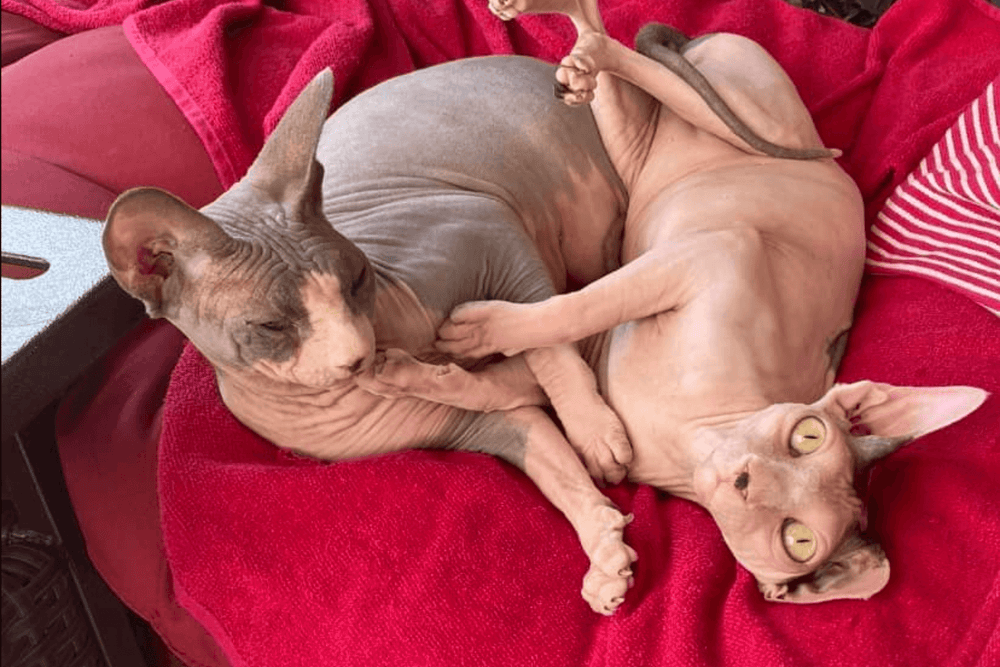
The Sphynx, an extraordinary cat
Originally from Canada, the Sphynx is probably the breed of cat that arouses the most fascination. And for good reason: it has no hair or almost no. It does not have a beautiful and thick fur like the Maine Coon , the Ragdoll or the Birman . Its skin is completely bare or is only covered with a very fine down that makes it extremely soft. A peach skin that we want to stroke all the time! The Sphynx cat also has a unique silhouette: lemon-shaped eyes, large and very expressive, huge and open ears and a very thin tail.
The Sphynx leaves no one indifferent, and adopting one is a real stroke of luck. It is a cat with a tender character : affectionate and very cuddly, it likes to snuggle under the duvet or in the arms of its parents. It appreciates company, kisses and caresses. Not liking solitude, it can however be a bit of a clingy pot, hence its nickname of “Velcro cat”. It follows us everywhere, even to the toilet! Well, what cat doesn't do that? 😹
The Sphynx is also a precocious cat; kittens open their eyes much earlier than others, and walk faster than baby cats of other breeds, indicates on its website the Official Book of Feline Origins (LOOF) . Could these be signs of intelligence? In any case, one thing is certain, the Sphynx cat is an incredible tomcat, whether in terms of its physique or its companionship.
Unique look, special needs? If you have just adopted a Sphynx cat, you must have a lot of questions, especially about its diet. Does the Sphynx cat need specific food? How to feed it well so that it is healthy? Look no further, we will explain everything to you to take good care of your little furry friend.
Does the Sphynx cat need a specific diet?
Although unique in its kind, the Sphynx cat is still a cat (even without hair), and its nutritional needs are exactly the same as all other cats , whether they are hairy or not.
Like all other whiskered cats, it is a strict carnivore, meaning that it cannot live and remain healthy without animal proteins in its diet. These proteins are essential because they provide the amino acids necessary for the cat to synthesize its own proteins. Of the twenty or so amino acids found, 11 are essential for cats. They include: taurine, taurine, arginine, phenylalanine, methionine, valine, leucine, isoleucine, lysine, tryptophan, threonine and histidine.
The Sphynx cat has the same nutritional needs as all other cats.
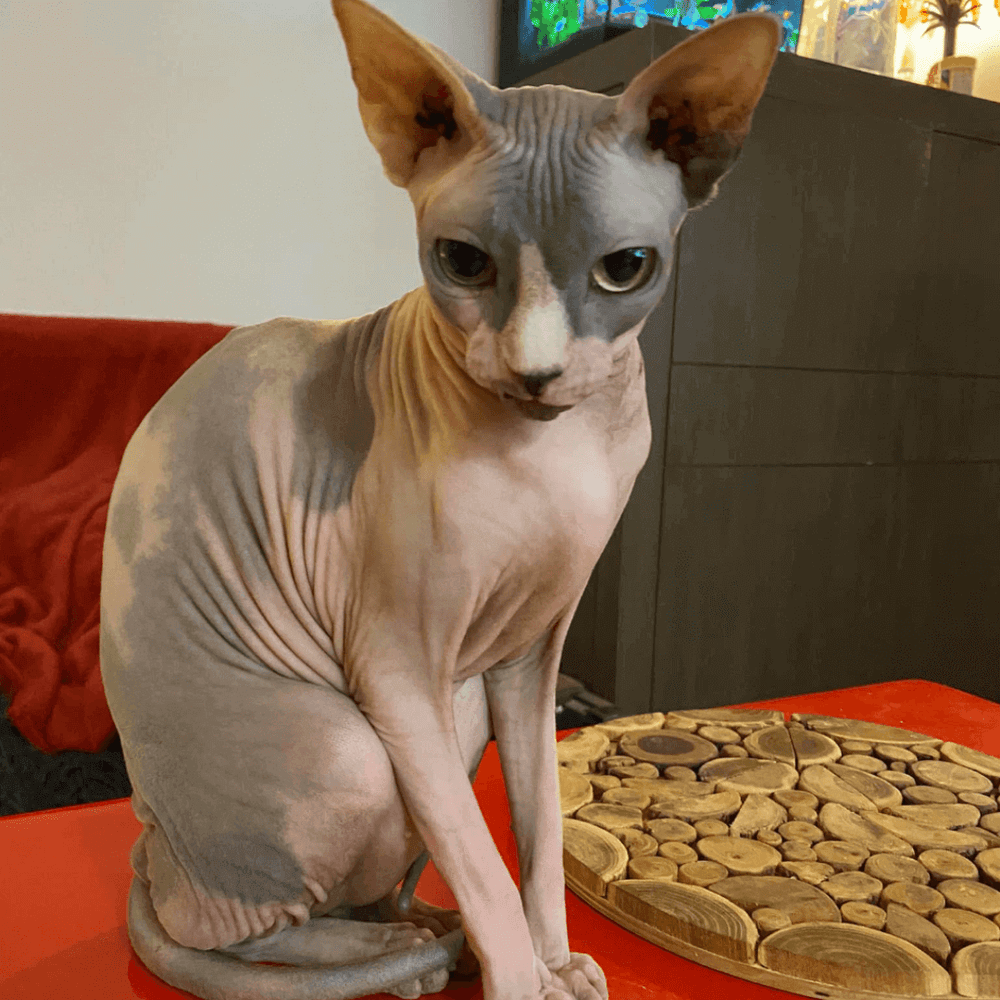
Without animal protein, and therefore without amino acids, your Sphynx cat would not survive. And if he does not have enough animal protein in his diet, he would find himself severely deficient.
An arginine deficiency would be fatal: a single meal deficient in arginine would even trigger a hyperacute ammonia poisoning in your little cat, which manifests itself by a severe encephalopathy accompanied by vomiting, lethargy, hyperactivity, ataxia, coma and death in less than three hours! Note that arginine is a particularly important amino acid in cats because it allows the formation of another amino acid, ornithine. This is involved in the urea cycle.
A deficiency in threonine would result in neurological disorders. And as for taurine, a deficiency would cause central retinal degeneration (kitty would become blind), an alteration of immune function (it would no longer have any defense against external infections and bacteria) or even cardiomyopathy.
Your Sphynx cat is a strict carnivore, but don't get me wrong: he needs meat products, but these should not make up 100% of his food. He also needs to find in his food lipids (essential fatty acids), minerals (calcium, phosphorus, magnesium, potassium, sodium, etc.) , vitamins (especially group B) and fibers essential for good transit. Fibers provided for example by vegetables, such as carrots, zucchini or squash.
The Sphynx needs more calories in its diet
The Sphynx cat has the same nutritional needs as all other cats, with one difference: it needs more calories in its diet.
Lacking a thick, beautiful coat to keep warm, the Sphynx cat spends more energy regulating its body temperature , and must therefore obtain this extra energy from its food. The Sphynx's caloric requirement is estimated to be 20% higher on average.
How to feed my Sphynx cat properly?
A diet rich in quality proteins
Because he has a higher energy requirement, your Sphynx cat needs a cat food rich in quality animal proteins!
We insist on the word QUALITY because most cat (and kitten) foods are rich in protein, but these are not often qualitative. We often find, not noble offal or real pieces of muscle, but reconstituted meat (mixture of animal and vegetable proteins), animal meal or even mechanically separated meat (MSM), a product “obtained by the removal, using mechanical means, of meat, bones or poultry carcasses”. MSM can contain bone, cartilage or marrow residues. Not enough to purr in front of the bowl.
These proteins, very economical, have no nutritional interest for our cats. They are very difficult to digest for our whiskers; by ingesting them, kitty will not use them for its metabolism. In addition, the unassimilated amino acids will be eliminated through urine. His kidneys will work a lot, and in the long term, suffer from chronic kidney disease.
To ensure your Sphynx cat is healthy, pay particular attention to the quality of the proteins used in its food.
How do you know if the proteins used are of good quality?
You can rely on the protein/phosphorus ratio. This allows you to know a little more about the quality. It is calculated by dividing the crude protein rate by the phosphorus rate, two indicators present on the back of the packaging.
In feline nutrition, a protein source is considered qualitative when its ratio is high (greater than 35). This is the case for fish, eggs and offal. Conversely, a protein source is of poor quality when its ratio is low (less than 25). These include cereals, carcasses and bones.
Other indicators that may alert you:
- The Protein-Phosphorus Ratio (RPP)
- The phosphorus rate
- The crude ash content (indirect indicator of quality). This indicates the amount of minerals (calcium, phosphorus, magnesium, etc.) present in your cat's food, after complete combustion of the latter. And the higher it is, the more carcass has probably been added.
We explain everything to you in our article on proteins in your cat's diet.
At Ziggy, all our cat food is complete and rich in quality proteins. We only use noble offal and real pieces of muscle so that your pet is healthy; salmon, beef or chicken.
Good proteins for your skin
A protein diet is also essential for your skin. Proteins are a source of vitamin A, also called retinol. This vitamin, which plays a fundamental role in vision and in particular for adaptation to darkness, participates in cell growth and tissue renewal (skin). It is only found in animal tissues (offal (liver), meat, fish and eggs).
That said, for your Sphynx cat to have beautiful skin, he also needs other nutrients, good fatty acids.
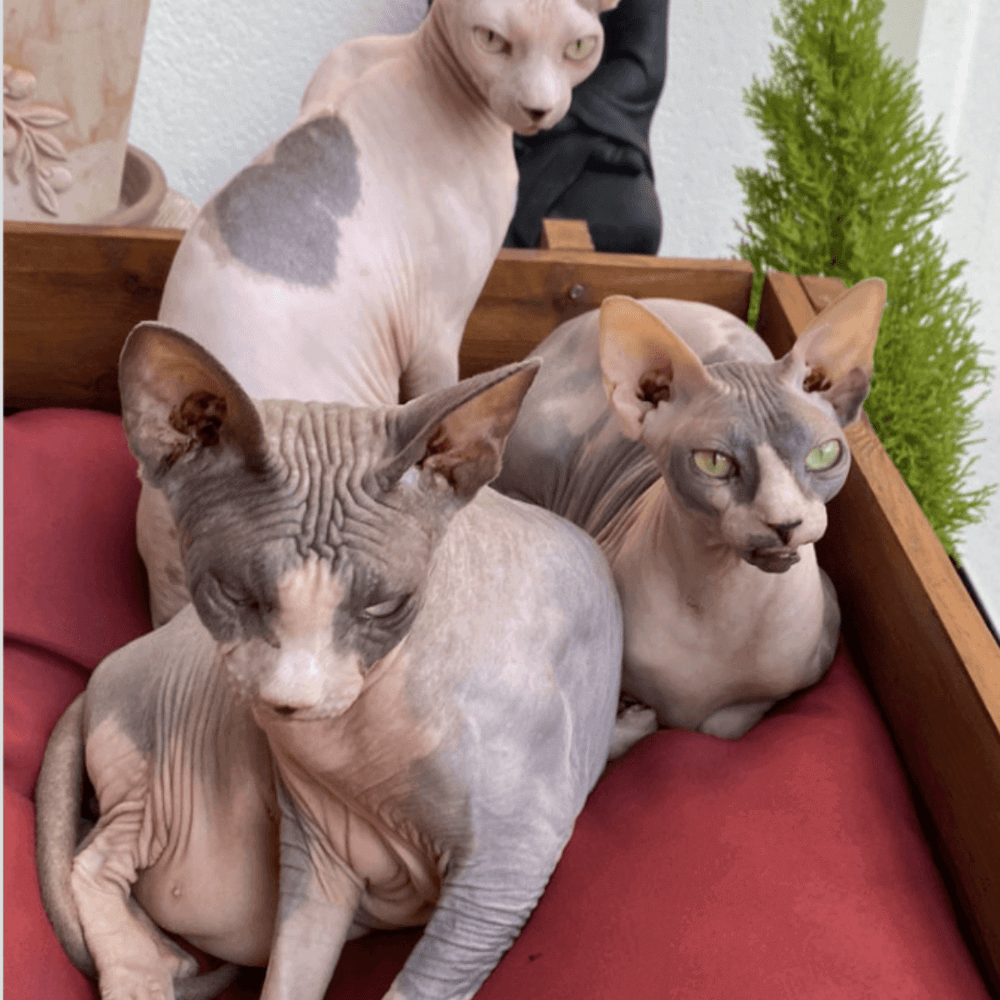
Fatty acids for healthy skin
In the family of essential fatty acids for cats, we have Omega 3 and 6. These are fundamental in the normal functioning of the skin.
In Omega 6 (the most important), we find linoleic acid and arachidonic acid.
As explained in our article on cat hair, linoleic acid is part of the composition of the skin's ceramides, which ensure its impermeability and ensure transcutaneous water loss. In the event of a deficiency, linoleic acid is replaced in the ceramides by oleic acid, a fatty acid from the Omega 9 series and which is much less effective. If your Sphynx is deficient, its skin will appear oilier and, in some cases, will have sticky scales.
As for arachidonic acid, it allows the synthesis of prostaglandin E3, a fatty acid that stimulates the proliferation of epithelial cells (epidermal cells). In the absence of arachidonic acid, the skin becomes thin and fragile.
For your Sphynx to have beautiful skin, its food must be enriched with Omega 3 and 6. They are found in rapeseed and soybean oils. Olive oil, on the other hand, is not interesting for cats: it mainly contains oleic acid.
Pssst: our Ziggy pâtés contain rapeseed oil and provide sufficient Omega 3 and 6 so that your Sphynx cat can have healthy skin all year round.
Little starch for his Sphynx cat
The Sphynx is a particularly sensitive cat when it comes to its little belly, it is often subject to intestinal disorders. Sphynx cats, like Bengals , tend to have poor digestion of starch , a carbohydrate found in cereals, legumes and tubers. This is why at Ziggy, we recommend that you choose pâté rather than kibble for your Sphynx cat.
Unlike pâtés, kibbles necessarily contain starch. This carbohydrate is essential for the production of kibbles - even those without cereals - because it serves as a sort of glue. Until today, no manufacturer has found an alternative. To replace cereals, they use other sources of starch such as potatoes, chickpea flour or sweet potatoes.
Please note, however, that not all pâtés sold on the market are starch-free. You have to be careful. At Ziggy, we have chosen to exclude cereals, starches and legumes from all our wet recipes. No starch, no problem for your beloved companion!
If you want to know more about the benefits of pâté, don't hesitate to watch the video of our veterinary nutritionist, Dr. Géraldine Blanchard. She explains everything to you!
We advise you to favor pâté, but know that you can also offer kibble as a supplement, or offer a so-called "mixed" diet to your Sphynx. But here, also pay attention to the carbohydrate content of the kibble. Some products can contain up to 50% carbohydrates, real glycemic bombs! In addition to being difficult to digest, a diet too rich in carbohydrates could increase the demand for insulin secretion, and thus predispose to the development of diabetes mellitus .
Our grain-free kibble contains between 18% and 25% carbohydrates, maximum.
And good fats!
In addition to good protein, your Sphynx cat needs a sufficient intake of fats - lipids play a role in thermal and mechanical protection of vital organs and cells (skin protection). They are also part of the composition of the myelin sheath, a substance that insulates and protects nerve fibers.
For your Sphynx cat, at least 10% lipids (on dry matter) are recommended in its diet.
Our kibble for adult cats contains 13.5% and 14% fat respectively, including Omega 3 and 6 which are essential for your whiskered cat's skin.
Should you feed your Sphynx cat more?
The Sphynx has a higher energy requirement than other cats, but this does not mean that you should double the quantities of kibble and pâté in his bowl. As long as they are rich in QUALITY proteins, you can feed him “normally”.
His daily ration will depend on his age, weight, height and physical activity, whether he goes outside or spends his days on the couch.
To easily and accurately determine the amount of food to give your cat, use our personalized ration calculator . In just a few clicks, you will know exactly what to put in your beloved furry friend's bowl. 😽
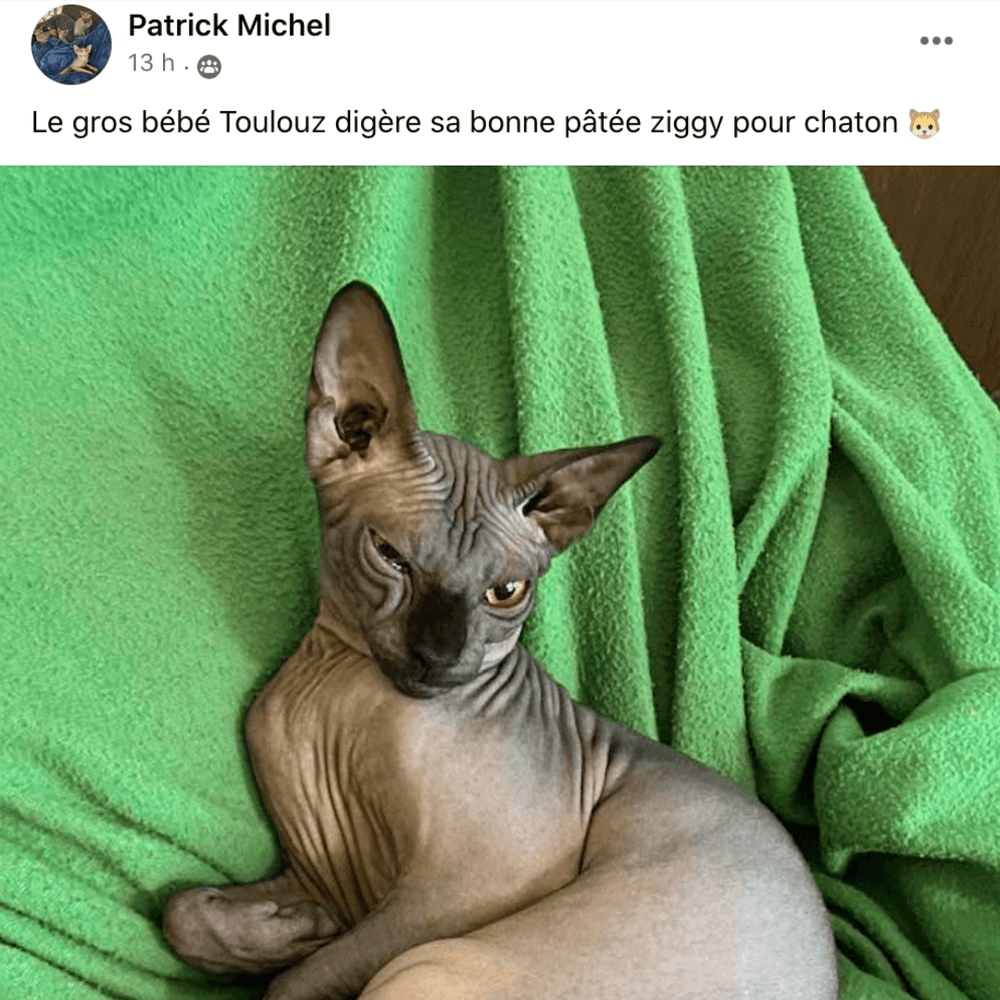
How to feed my Sphynx kitten properly?
If your Sphynx is still a kitten (less than 12 months old), he needs kitten food. His diet must cover all his nutritional needs: quality animal proteins, lipids (essential fatty acids), minerals and vitamins. Just like his elders!
However, your Sphynx kitten is still growing. Until his first year, he will need a little more calories and fat in his diet. And above all, he will need higher amounts of minerals, especially calcium and phosphorus.
For your Sphynx baby cat, give him special kitten food until he is 12 months old, even if he is sterilized. When he is old enough, he can then switch to adult cat food.
His bowl can only contain pâté or a mix of kibble and pâté.
Which kibble and pâtés should I choose for my Sphynx cat/kitten?
As you will have understood, for your Sphynx cat, the ideal diet is a food rich in quality proteins, containing good fatty acids and low in carbohydrates. At Ziggy, all our kibble and pâtés for cats meet these criteria.
Adapted to your Sphynx cat, whatever its age, our recipes perfectly meet its nutritional needs: they are rich in quality proteins (muscles and noble offal), fatty acids and are low in carbohydrates. Count less than 2% carbohydrates in our pâtés for sterilized adult cats and kittens. The only carbohydrates present are those naturally coming from vegetables (carrot and zucchini).
As for our kibble, we specified it a little higher, they contain between 18% and 25% carbohydrates, maximum.
The guide to choosing the right kibble and pâté
Want to know more about your mustachioed man's food?
We have written a complete guide to learn how to read and decipher cat food packaging. We explain absolutely everything so that you can offer the best kibble and/or pâtés for your Sphynx.



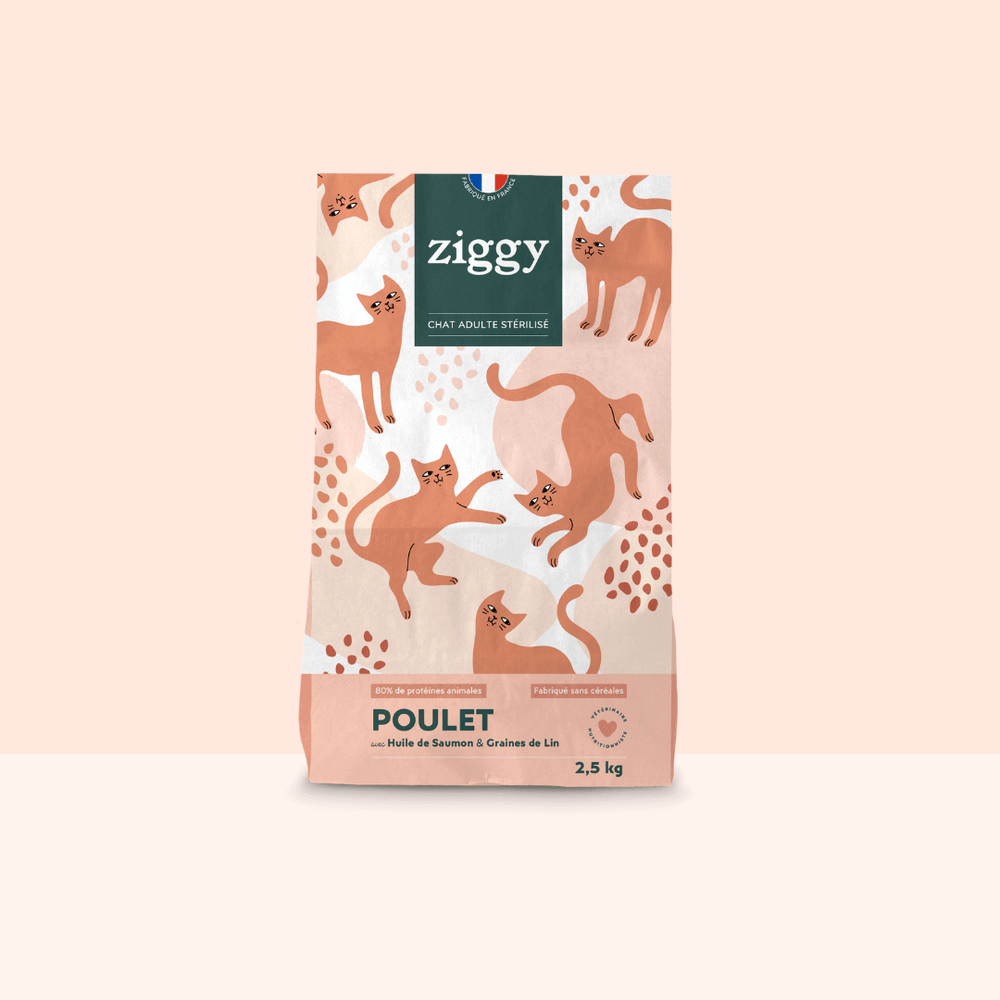
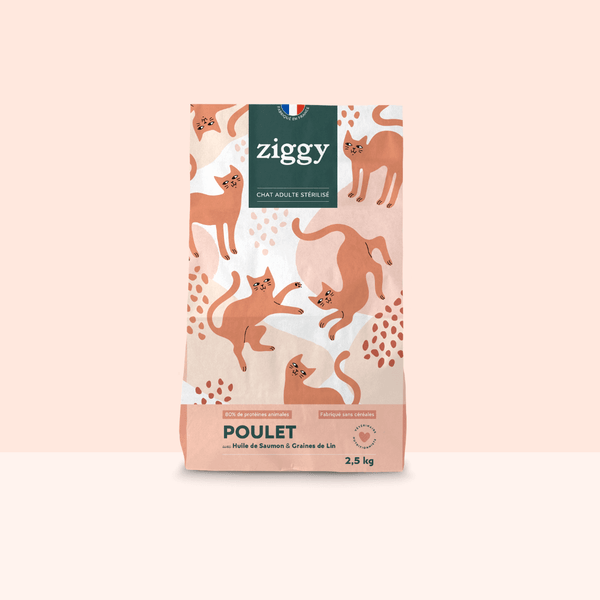

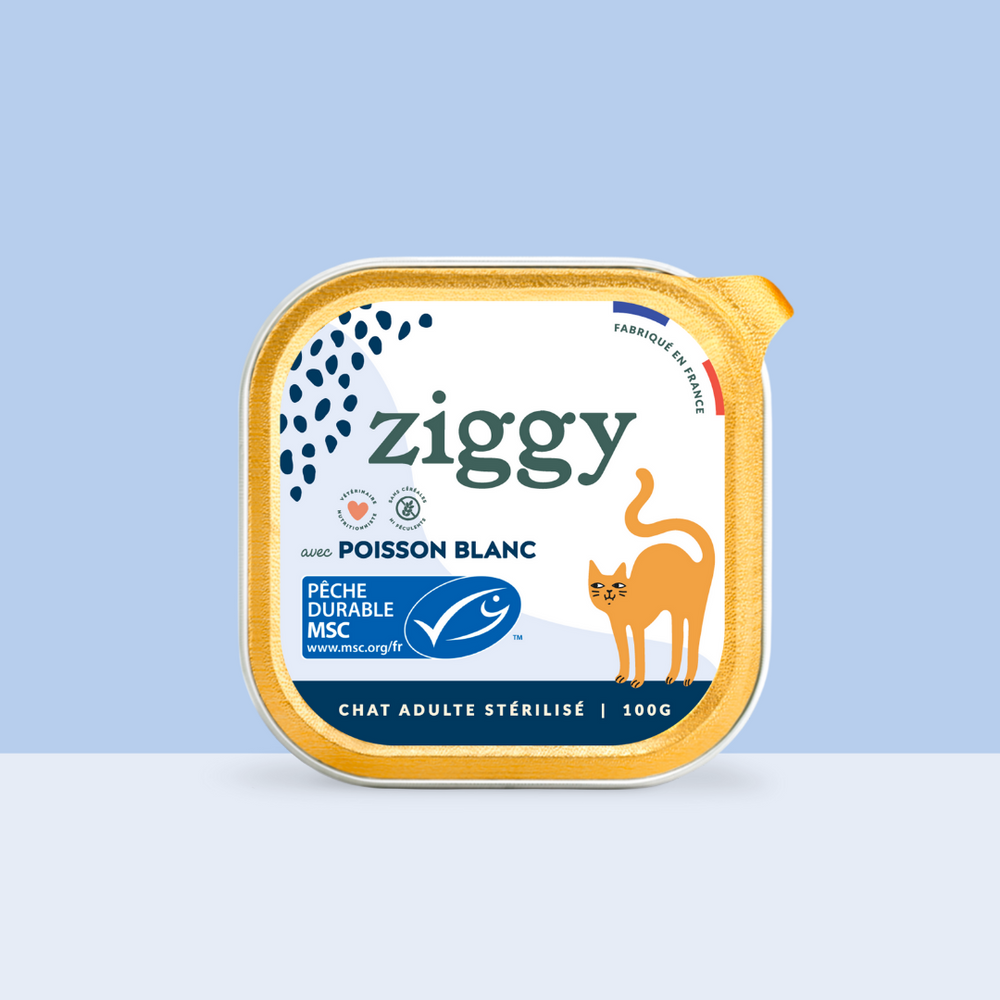
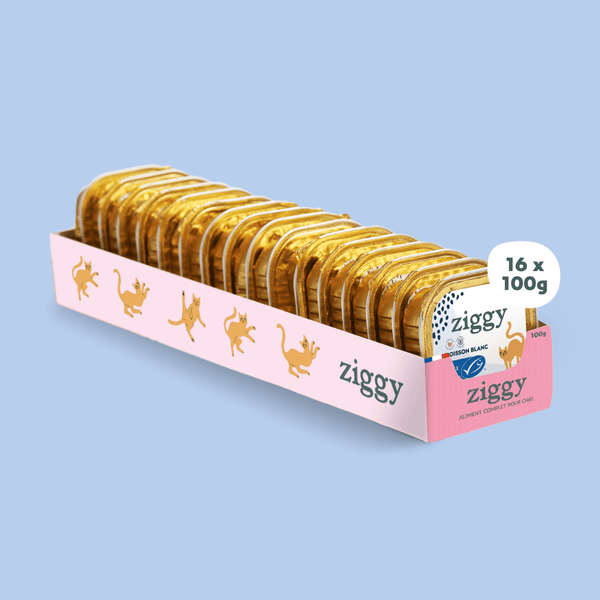

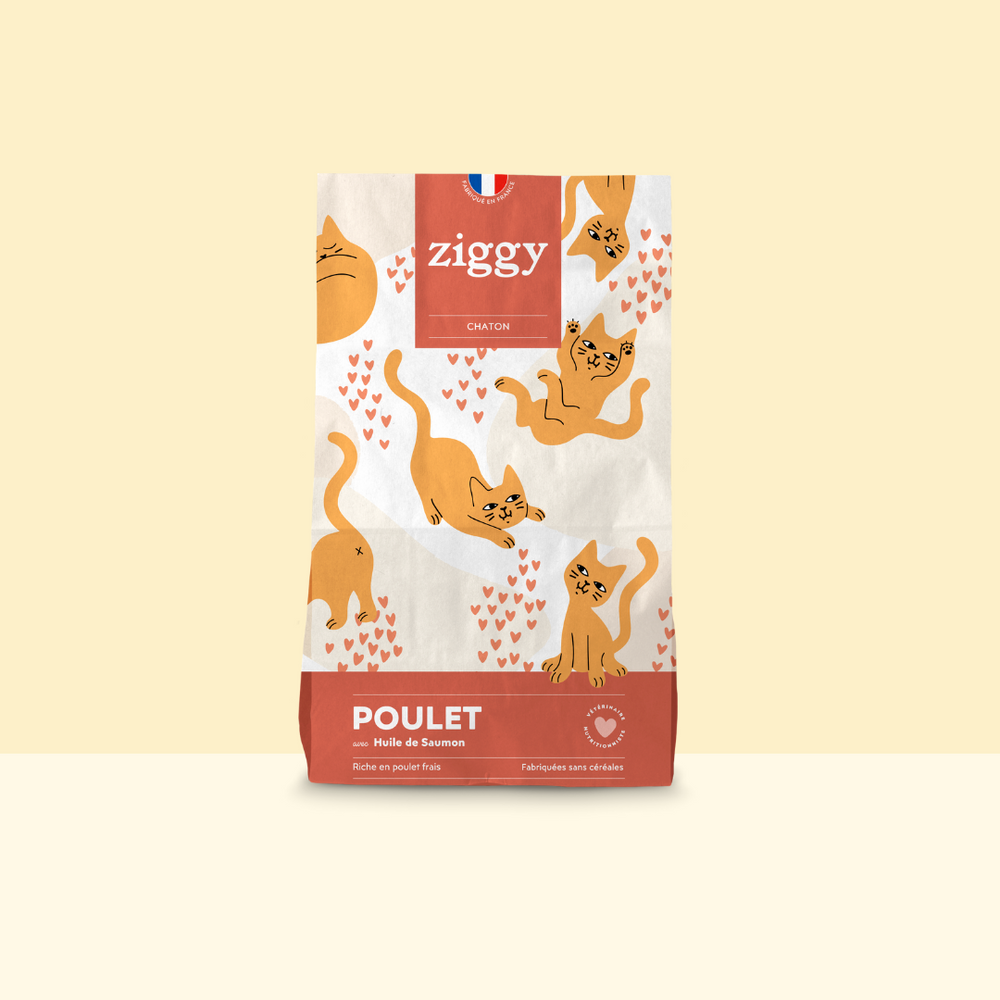
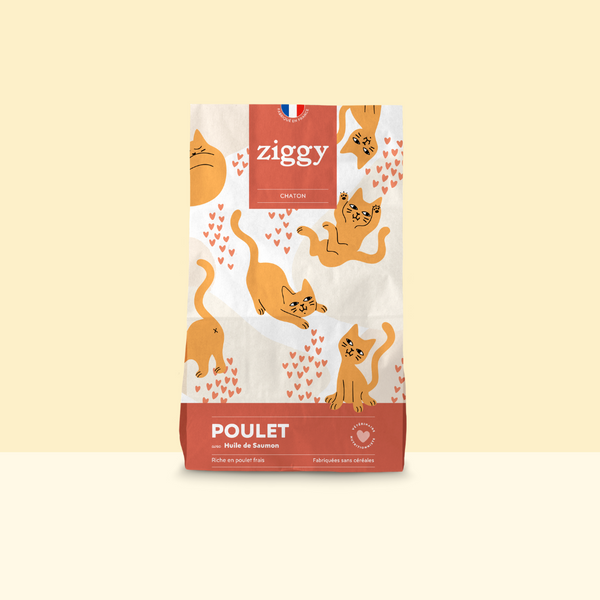

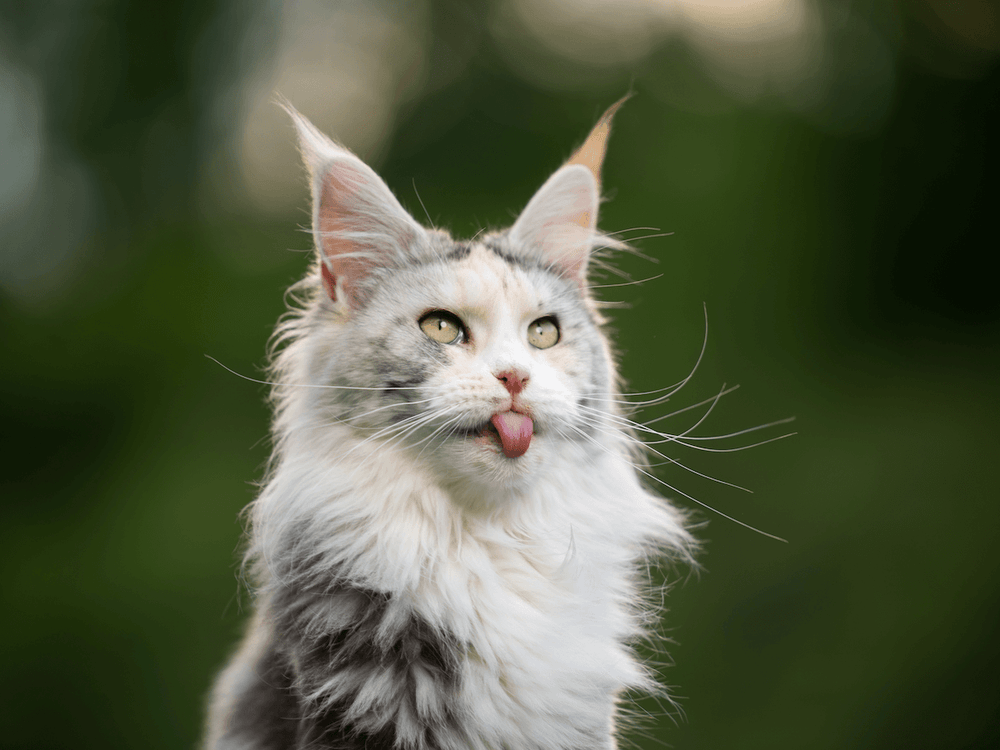
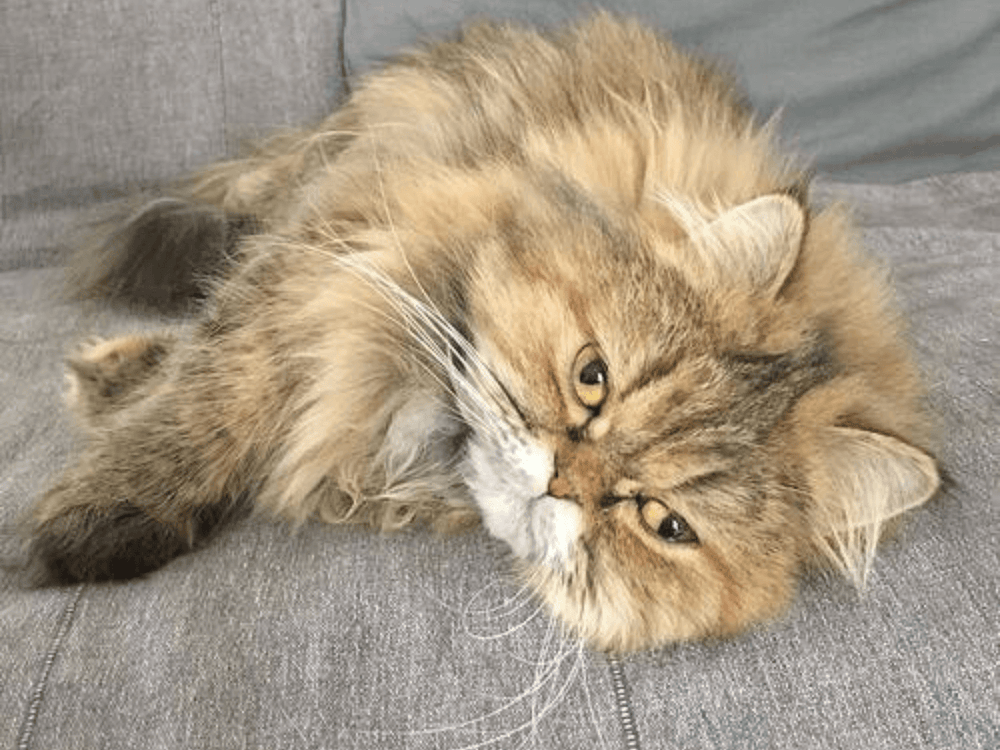
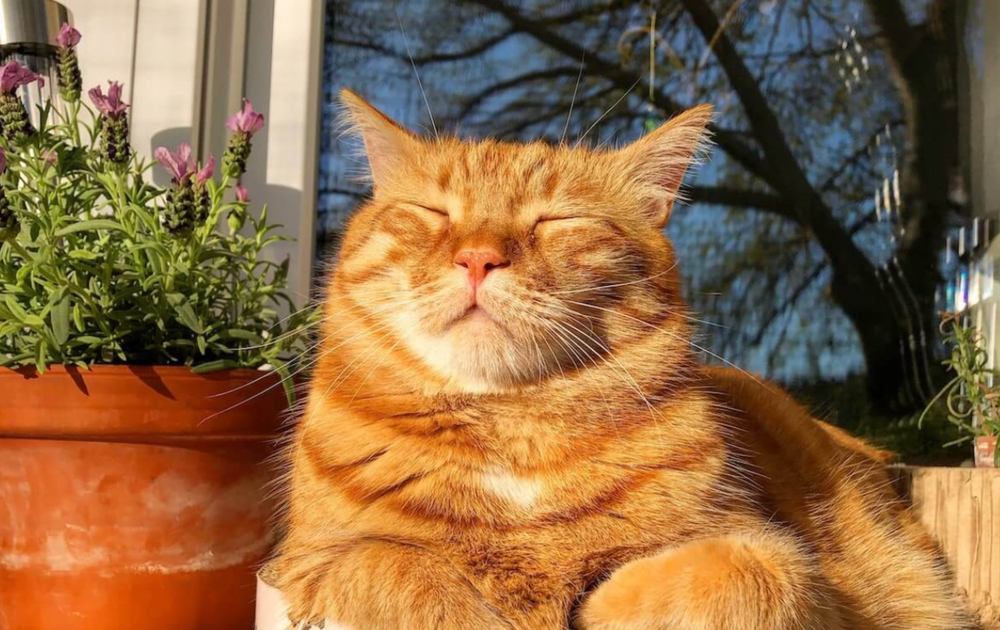
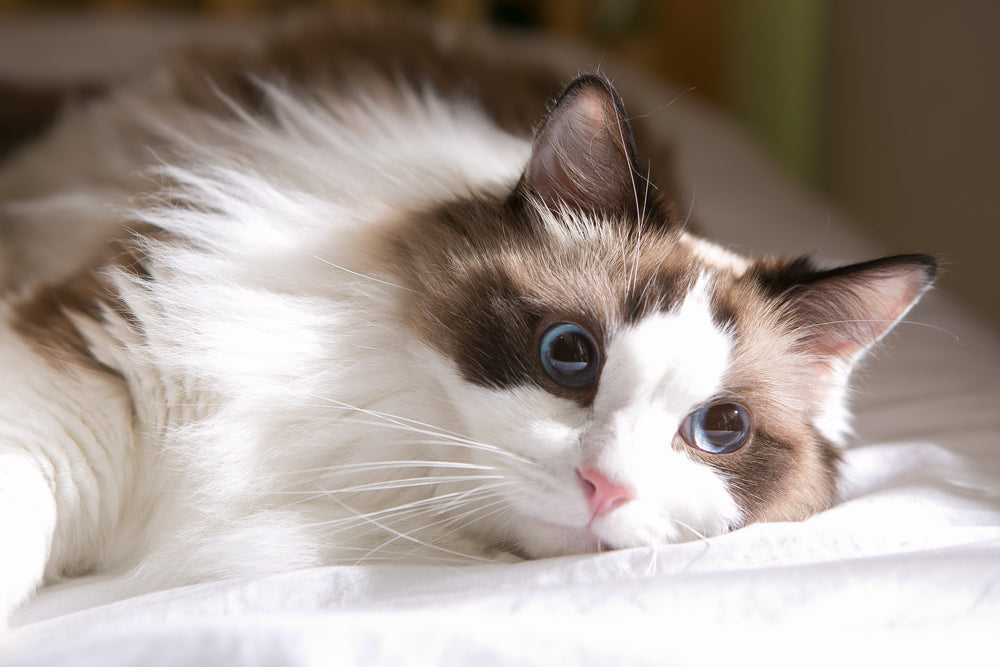
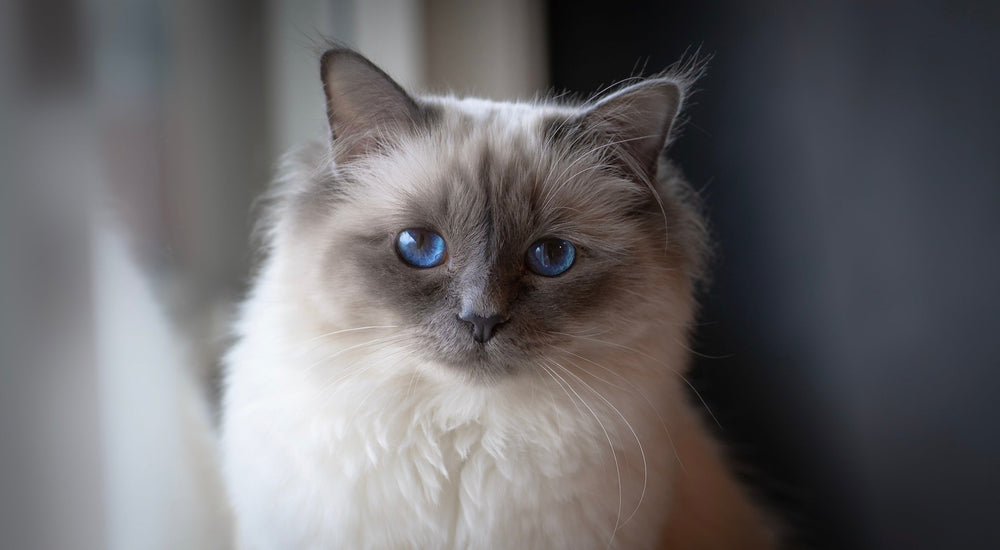
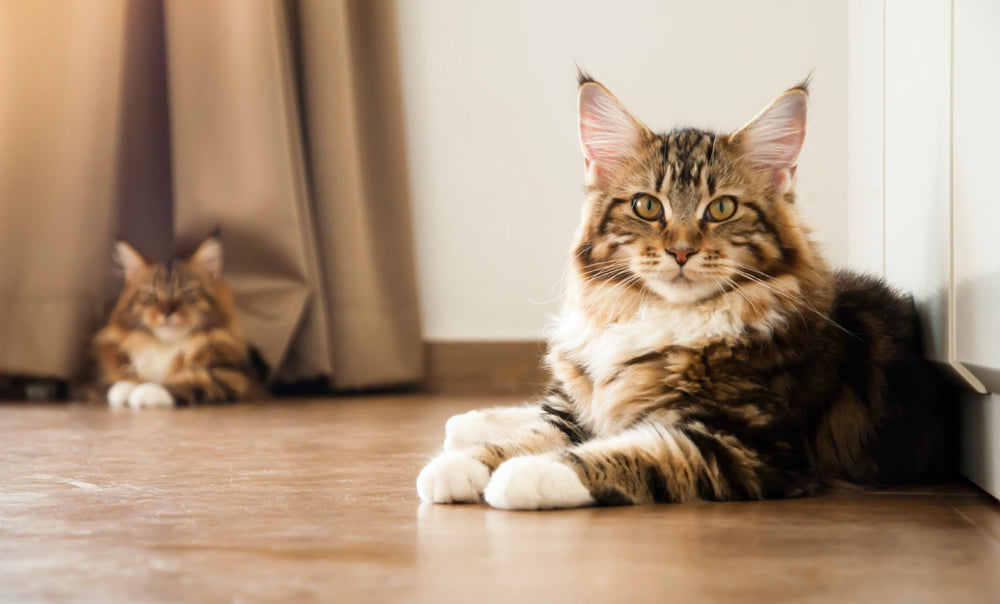
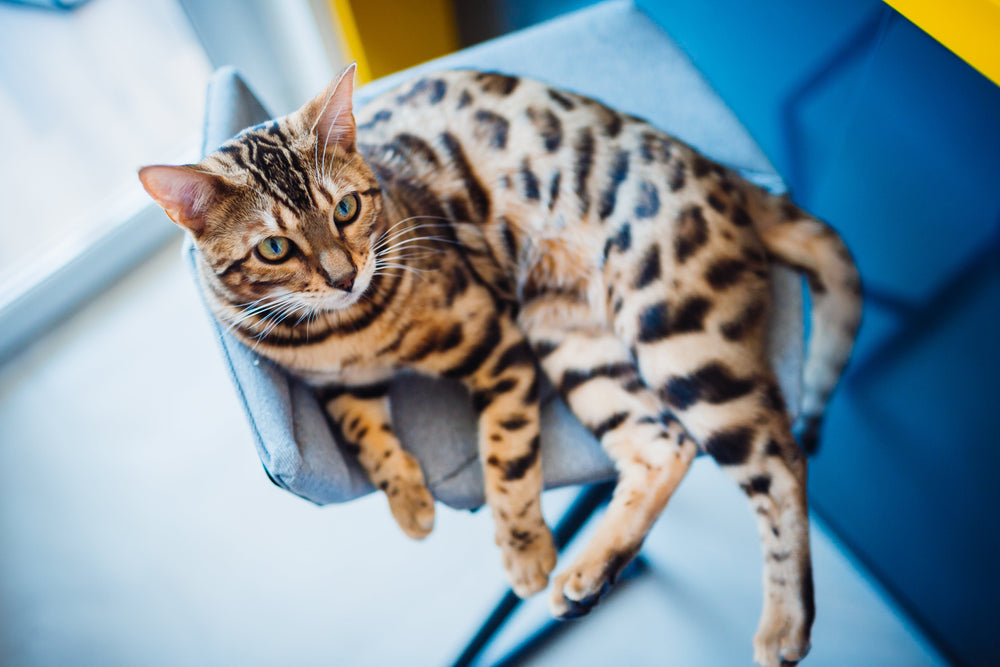
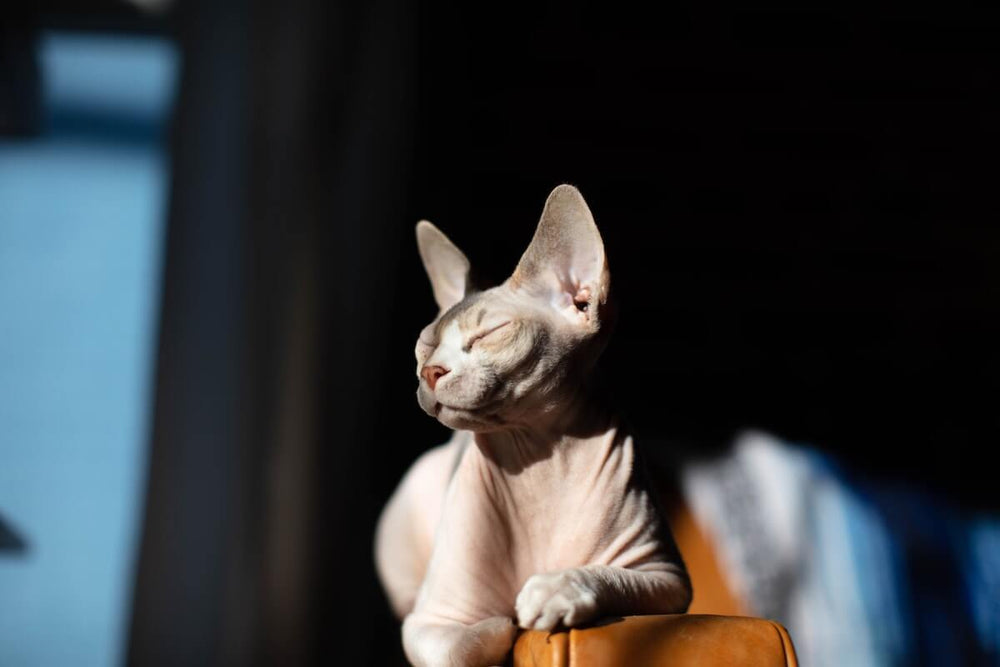
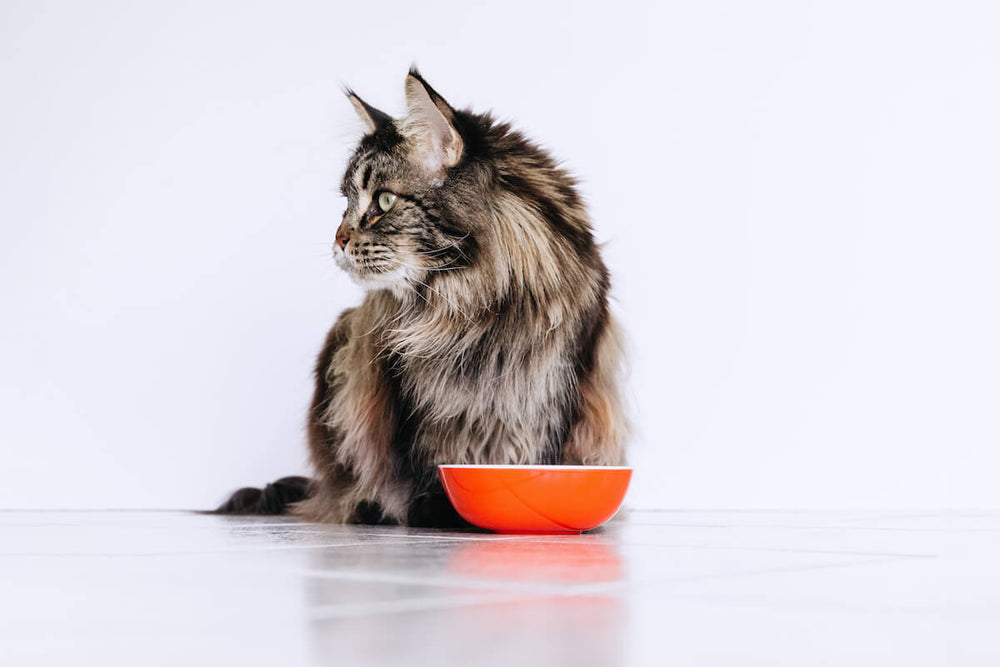
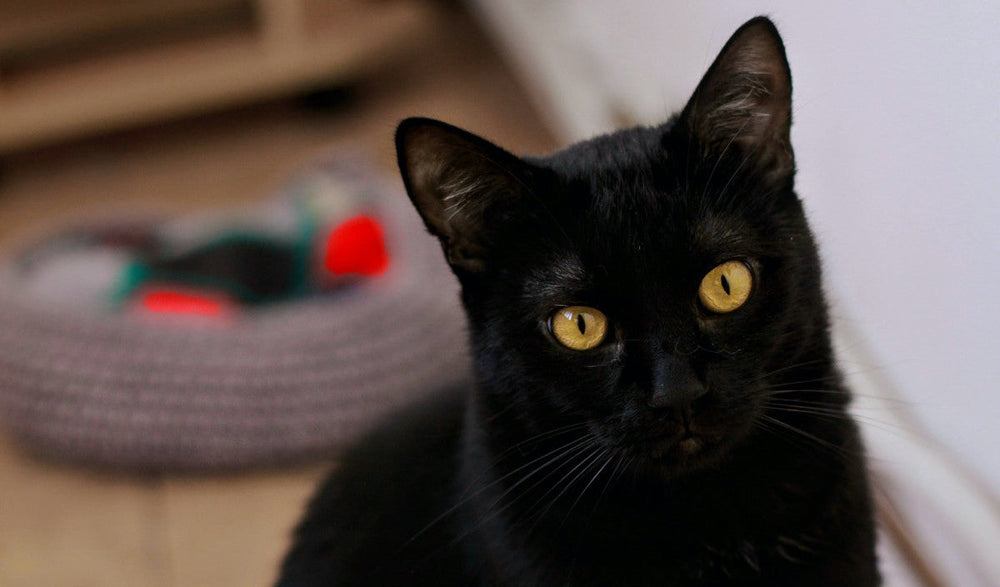
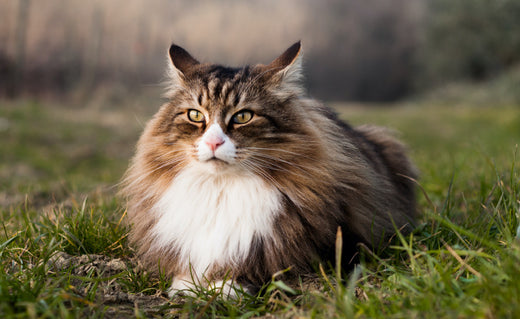
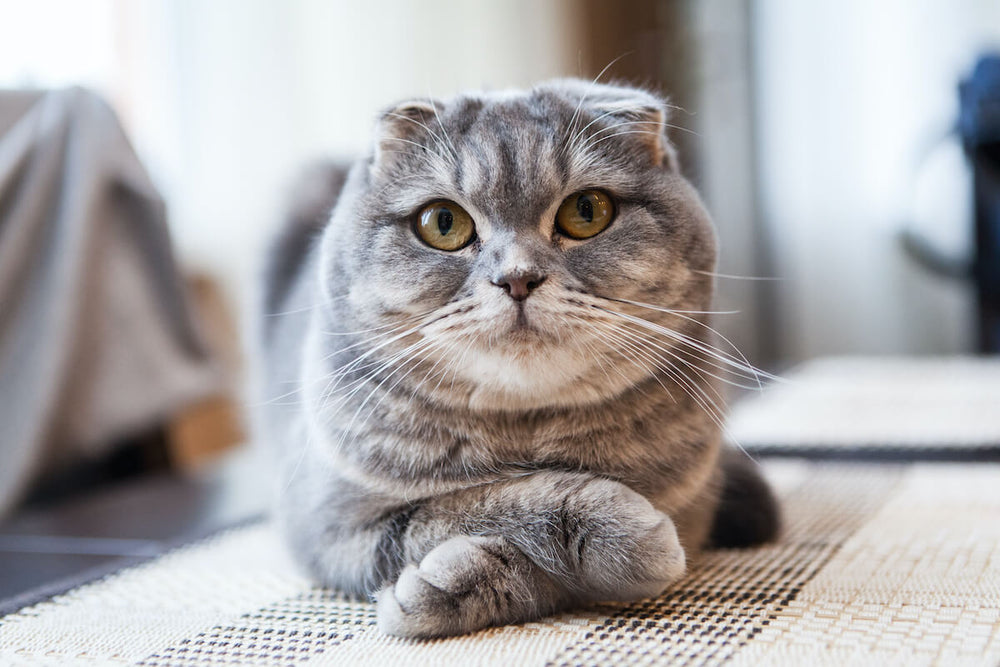
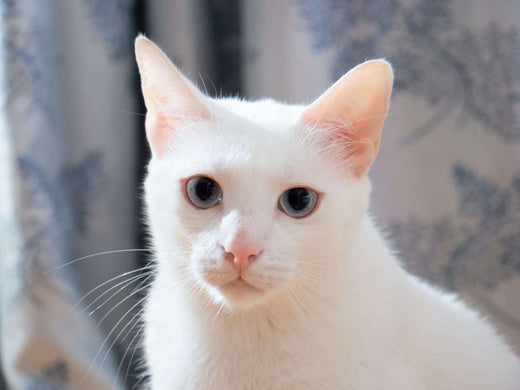
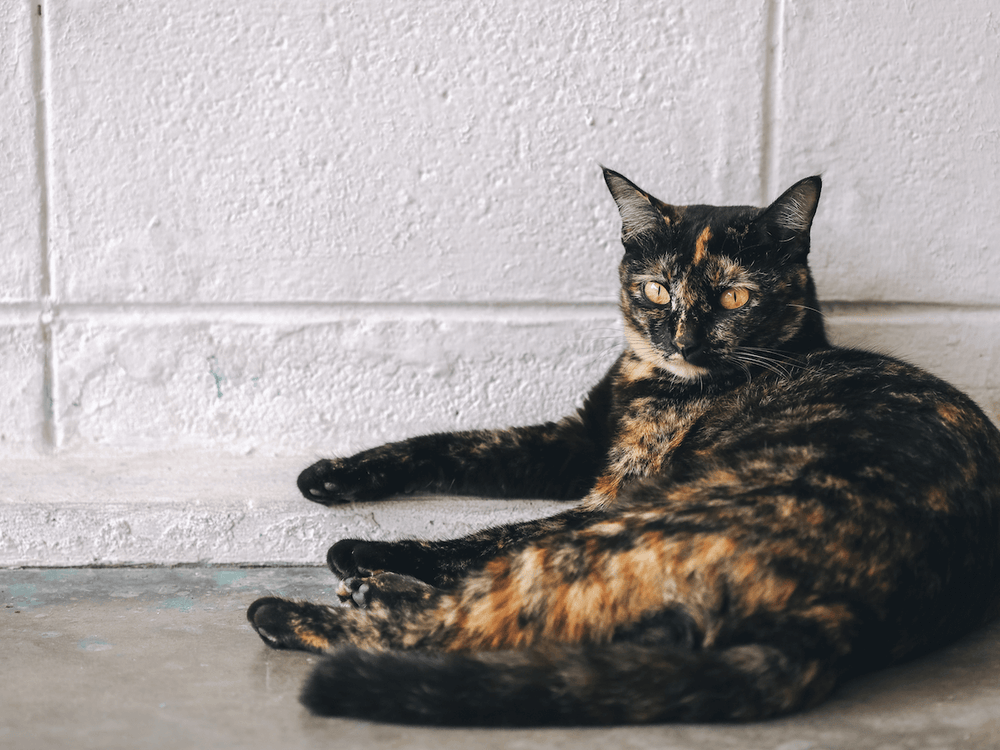
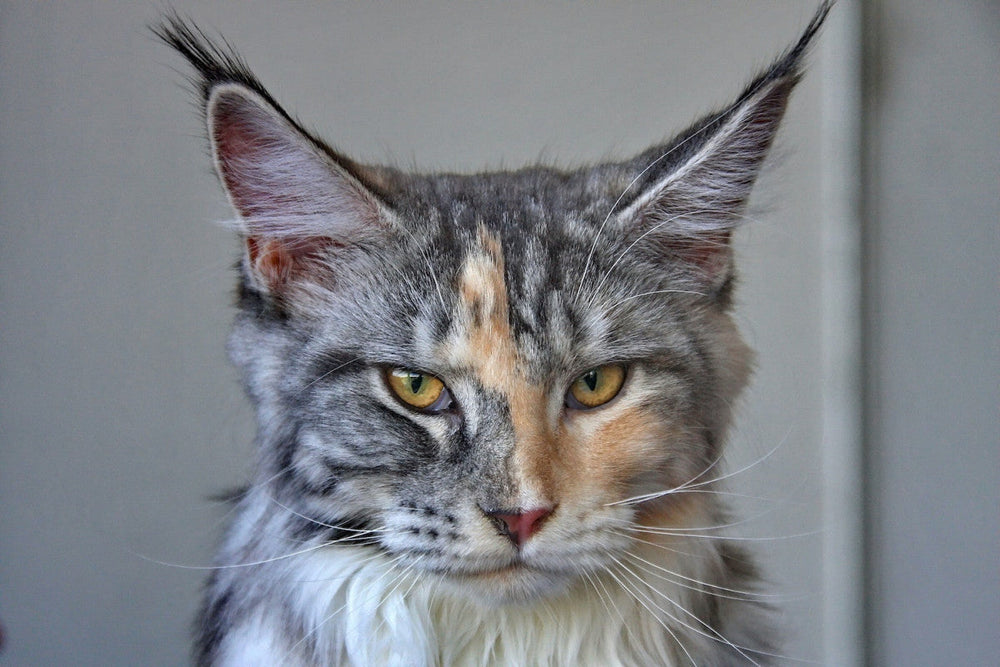



Leave a comment